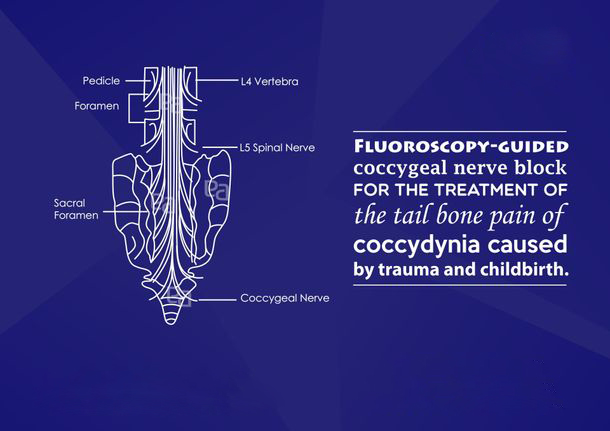

Treatments
ABDOMEN & PELVIC PAIN

Coccygeal Nerve Block
Why is a Coccygeal Nerve block done?
A coccygeal nerve block is an injection to treat the pain at the tip of your tailbone called the coccyx. The pain condition is known as coccydynia and could be caused by childbirth, trauma, repetitive strain injury (cycling) and being overweight or underweight.
The pain in the tip of the tailbone is dull and achy most of the time, with occasional sharp pains. It is made worse with sitting down or moving from sitting to standing position. Everyday activities such as sitting down with the computer or driving become very painful in coccydynia.
The coccygeal nerve block is done to relieve the pain of coccydynia and it could be both a diagnostic tool as well as a treatment. If you experience benefit for a few months after the injection, it could be repeated.
How is Coccygeal Nerve block done?
At Atlas Pain Care, you will be asked to lie on your tummy in the procedure room. Your back will be cleaned with antiseptic and sterilely draped. The doctor will then use an X-ray machine (fluoroscope) to guide the needle into the correct spot. An X-ray contrast (dye) may be injected at this point to confirm that the needle has been positioned correctly. Medicines are then injected through the needle, and the needle is removed. The procedure should take 10 to 15 minutes.
What happens after the Coccygeal Nerve block?
After the procedure, you will be shifted to recovery area. You will remain there for 5 to 15 minutes before being discharged home. You might have some local tenderness from the needles and might require icing. You may also resume all of your medications. Your pain may improve immediately after the injection or a few days later. Our physiotherapist will then teach you some simple exercises to help relax the muscles around your tailbone and give you advice about posture and movement to help reduce your pain.
What are the risks of the procedure?
There is a remote risk of bleeding, infection, nerve injury or an allergic reaction to the medications used. Some short-term side effects may occur, as well. The injection of local anaesthetic onto the nerve may cause some numbness that follows the path of the nerve that was blocked. You may have increased pain for a few days after the injection, including localised pain at the injection site. Please read our FAQ section to know more about the do's and don'ts prior to and after the procedure.

